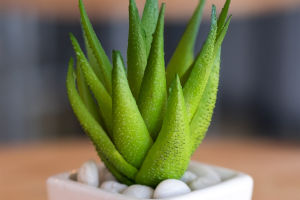Humans and animals have pupils in their eyes. This is the channel for external light to enter the eyes. When the light of the outside object enters our pupils, we can see this object. The size of the pupils of all animals will change. At this point, the cat's pupil changes are the most prominent.
The pupils of cat eyes are particularly large. Under the light of different intensities, it can change the shape and size of the pupil. Under the bright strong light stimulation, the cat's pupils will shrink as thin as the line. In darkness and place, its pupils are enlarged and round.
So why do cats' pupils get so thin in the middle of the day when the light is intense? Because the light at this time is sufficient, the pupil only needs a narrow channel, there can be a large number of light in the pupil of the eye. The opposite is true in low light when the pupil dilates and needs a wider opening to allow enough light to enter the pupil for the cat to see clearly.
Cat's pupils are adjusted very quickly. As long as one or two seconds, the shape of the pupil can be changed. Because cat pupils can become particularly large and can collect extremely weak light into the pupils, things can be seen clearly in a dark environment.
Cats have a layer of tapetum lucidum under their retinas. This tapetum lucidum reflects light from the retina back to the retina, which in turn uses much more of it, improving the cat's night vision. Studies have shown that cats receive only one-sixth as much light as humans to see clearly. That means a cat's eye is six times more sensitive than a human's.
But cats can't see as well as humans. A cat's eyesight can see at a distance of about six meters. Cats don't see very well. They can't see very well at a distance. A cat's vision is only one-tenth that of a human's, but cats have a very wide field of vision and can see things up to 200 degrees.
In a completely dark, there is no light, and cats cannot see anything like humans. But cats can identify the direction with the help of hearing, sensitive smell, and their beards.
Cat's pupil size is also related to emotions. When the cat's mood is different, the size of the pupils also changes because adrenaline affects the pupils. For example, when the cat is playing with toys, the pupils are large and round. At this time, the cat is curious and excited.
The pupil enlargement is to make the cat better observe. When a cat feels nervous or threatened, his pupils are magnified. At this time, cats have a little aggressiveness and require the owner to soothe their emotions.
So why do cats' eyes glow in the dark?
That's because the cat's tapetum lucidum contains two main reflective substances, zinc, and riboflavin. Riboflavin can absorb short-wavelength light and emit long-wavelength light. The light emitted is close to the peak of the photoreceptor cells in the cat's eye, so you see the cat's eye glow.
Cats' vision will also degenerate with their age. Just like human vision degeneration after humans are old. So in the daily cat's diet, the owner can properly supplement them with some foods containing taurine.


